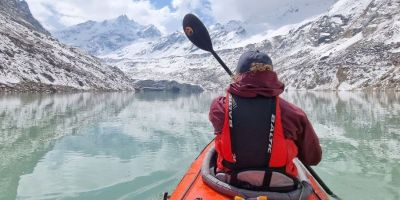Hydropower without the environmental impact

Scientists have analysed data from nearly three million rivers across the globe to identify where hydropower stations could be sited with limited environmental impacts.
The analysis identified 124,761 potential locations that met the strict environmental criteria. Of those, 4,644 of the schemes could be run profitably and would be capable of generating an additional 5.27 Petawatt hours of energy per year, equivalent to a fifth of current global electricity use.
It identified potential locations initially based on high water flow and a necessary requirement for a hydropower plant to work. Sites that would come with an environmental cost were removed from the list.
With careful planning and development, hydropower can make an important contribution to electricity generation.
The criteria for exclusion included instances where communities would have to be displaced, or forest or peatland ecosystems would be disturbed. Areas of significant heritage or biodiversity or where flood risk would be increased or where the construction process would degrade land, were also ruled out along with sites in earthquake-prone areas.
Professor Joseph Holden, Director of the water@leeds research group at the University of Leeds and one of the international team of scientists involved in the project, said the research will help redress the negative perceptions of hydropower.
He said: “Some hydropower schemes undoubtedly have been environmentally damaging. Our detailed analysis shows there is another side to the story. With careful planning and development, hydropower can make an important contribution to electricity generation. This major piece of work identifies where those sites are in the world.
“Hydropower can bring major benefits reducing the demand on coal or gas fired plants which are contributing to climate change.”
Hydropower can be part of the mix of power generated from renewable resources, providing a source of power when electricity from wind and solar may be reduced because of weather conditions.
The study, A global-scale framework for hydropower development incorporating strict environmental constraints, has been published in the inaugural edition of the scientific journal Nature Water.
The study looked at two main hydropower systems: where a dam collects water which is then channelled through a turbine to generate electricity; and diversion, where waterflow is rerouted from the river to power a generating plant further downstream.
Just over 80% of the potential power plants would involve dam building.
One of the environmental criteria that had to be met was ensuring that altered river flows downstream of dams would not be so excessive that other users and aquatic ecosystems would be severely impacted.
Lee Brown, Professor of Aquatic Science at the University of Leeds and one of the study's co-authors, said: "Freshwater ecosystems worldwide host diverse communities of plants and animals, but due to human modifications of the environment this diversity is being lost at faster rates than we see in terrestrial or marine ecosystems.
“To avoid further losses and reverse declines, it is vital that where dams are built, they maintain sufficient environmental flows to downstream sections of the river."
The analysis argues that small-scale hydropower plants based on the diversion approach could be sited in the Himalayas and Andes where valleys are steep, generating the necessary water pressure required to generate electricity.
Meeting electricity demand from hydropower
The study found that those countries with the greatest number of potential hydropower sites - Myanmar, Pakistan, Peru, Nepal and the Democratic Republic of the Congo, Ethiopia and Laos, could “...fully meet their total current electricity demand” by developing the sites earmarked as potentially profitable.
In addition, most African states could substantially meet their electricity demands through expansion of hydropower.
Professor Holden added: “The study offers a path to develop more sustainable global hydropower, enabling it to play a larger role in future energy resources while reducing negative impacts on the environment and societies.”
The analysis can be downloaded from the Nature Water website. The authors from the University of Leeds contributing to the study were Professors Joe Holden and Lee Brown, from the School of Geography, and Professor Dominick Spracklen, from the School of Earth and Environment. International collaborators involved academics in China, Thailand, Europe, Singapore and the US.
Further details
To get more details, please contact David Lewis in the press office at the University of Leeds: d.lewis@leeds.ac.uk
Top image: Adobe images




